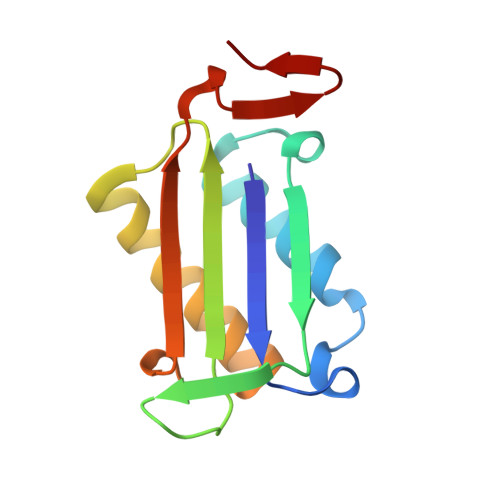Identification and Structure-Activity Relationships of Dietary Flavonoids as Human Macrophage Migration Inhibitory Factor (MIF) Inhibitors.
Yang, L., Guo, D., Fan, C.(2021) J Agric Food Chem 69: 10138-10150
- PubMed: 34459191
- DOI: https://doi.org/10.1021/acs.jafc.1c03367
- Primary Citation of Related Structures:
7E45, 7E47, 7E49, 7E4A, 7E4B, 7E4C - PubMed Abstract:
Dietary flavonoids are known to have anti-inflammatory and anticancer effects, but their influences on human macrophage migration inhibitory factor (MIF), a vital proinflammatory cytokine recognized as a therapeutic target for infectious diseases and cancers, have been rarely reported. Here, we identified 24 dietary flavonoids that could inhibit the tautomerase activity of MIF, five of which exerted IC 50 values lower than the positive control ISO-1 in the micromolar range: morin (IC 50 = 11.01 ¡À 0.45 ¦ÌM) and amentoflavone (IC 50 = 13.32 ¡À 0.64 ¦ÌM) exhibited the most potent efficacy followed by apigenin (IC 50 = 42.74 ¡À 4.20 ¦ÌM), naringin (IC 50 = 51.38 ¡À 2.12 ¦ÌM), and fisetin (IC 50 = 51.99 ¡À 0.63 ¦ÌM). X-ray crystallography, molecular docking, and cellular experiments were utilized to illustrate the molecular binding details and structure-activity relationships. Scaffold modifications of flavonoids significantly influenced the potency. What stands out for morin is the unique 2'-OH substitution. In addition, amentoflavone situated at the MIF trimer pore may impact MIF-CD74 signaling. The results also showed that flavonoids could suppress cell chemotaxis and nitric oxide production in RAW264.7 cells. Our results elucidate the molecular mechanism of flavonoids acting on MIF and shed light on developing lead compounds against MIF-involved diseases.
Organizational Affiliation:
School of Basic Medical Sciences, Wuhan University, Wuhan 430072, P. R. China.
















